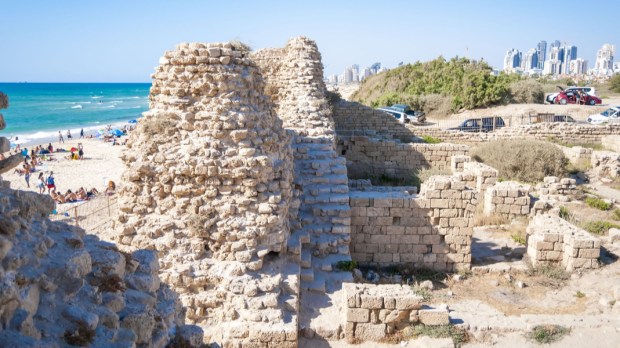The Philistines. Who were they? What do we know about them? Where did they come from, and where did they go?
Based on a reading of the Bible alone, we don’t know all that much: the Philistines we read about in Scripture sent Delilah to cut the hair of the Israelite leader Samson, stripping him of his power. Goliath, the giant slain by David, was a Philistine.
“The Philistines’ reputation as a hostile, war-mongering, hedonistic tribe became so pervasive that ‘philistine’ is still sometimes lobbed as an insult for an uncultured or crass person,” notes Smithsonian magazine.
Investigations from the 19th and 20th centuries have already suggested that they came from outside of the Holy Land. Excavations revealed that the cities of Ashkelon, Ashdod and Ekron, Philistine strongholds, saw the emergence of new architecture and artifacts at the beginning of the Iron Age, around 1200 B.C., Smithsonian said. That would signal the arrival of the Philistines. But from where?
“Pottery found at Philistine archaeological sites … appeared to have been made locally, but looked strikingly like wares created by Aegean cultures such as the Mycenaeans, who built their civilization in what is now mainland Greece,” the magazine said, noting that the Bible mentions “Caphtor,” or Crete, as the origin of the Philistines.
Historians also know that, around the time these changes occur in the archaeological record, civilizations in the Aegean and Eastern Mediterranean were collapsing. The Philistines are written about in Egyptian hieroglyphs, where they are referred to as the Peleset, among the tribes of “Sea Peoples” said to have battled against Pharaoh Ramses III around 1180 B.C. Meanwhile, other scholars have suggested that the Philistines were in fact a local tribe, or one that came from present-day Turkey or Syria.
But earlier researchers didn’t have the ability to do genetic testing. Now, a new study relying on DNA analysis suggests that the Philistines came from southern Europe.
Archaeologists in 2013 discovered a cemetery with more than 200 burials contemporary with the Philistine settlement at Ashkelon, just outside the ancient city walls, Smithsonian said. The cemetery, which was used during the late Iron Age, between the 11th and 8th centuries B.C., was the first Philistine burial ground ever found. Researchers were able to sequence the whole genome of three individuals from the cemetery, in spite of the fact that DNA can break down when it’s too warm or humid. The team was also able to extract DNA from the remains of four infants who had previously been found in Philistine houses during excavations between 1997 and 2013. These children were buried in the Iron Age, in the 12th or 11th century, shortly after the Philistines supposedly arrival in the region.
The results showed that the four Iron Age infants all had some genetic signatures matching those seen in Iron Age populations from Greece, Spain and Sardinia.
“There was some gene flow coming in that was not there before,” Michal Feldman, lead author of the new report, told Smithsonian. Feldman studies archaeogenetics at the Max Planck Institute for the Science of Human History in Germany.
Commenting in Science magazine, Kristian Kristiansen, an archaeologist at the University of Gothenburg in Sweden, said, “We finally have real scientific proof that people moved into Ashkelon from Europe.” But it will take ancient DNA from across southern Europe to pinpoint their homeland.

